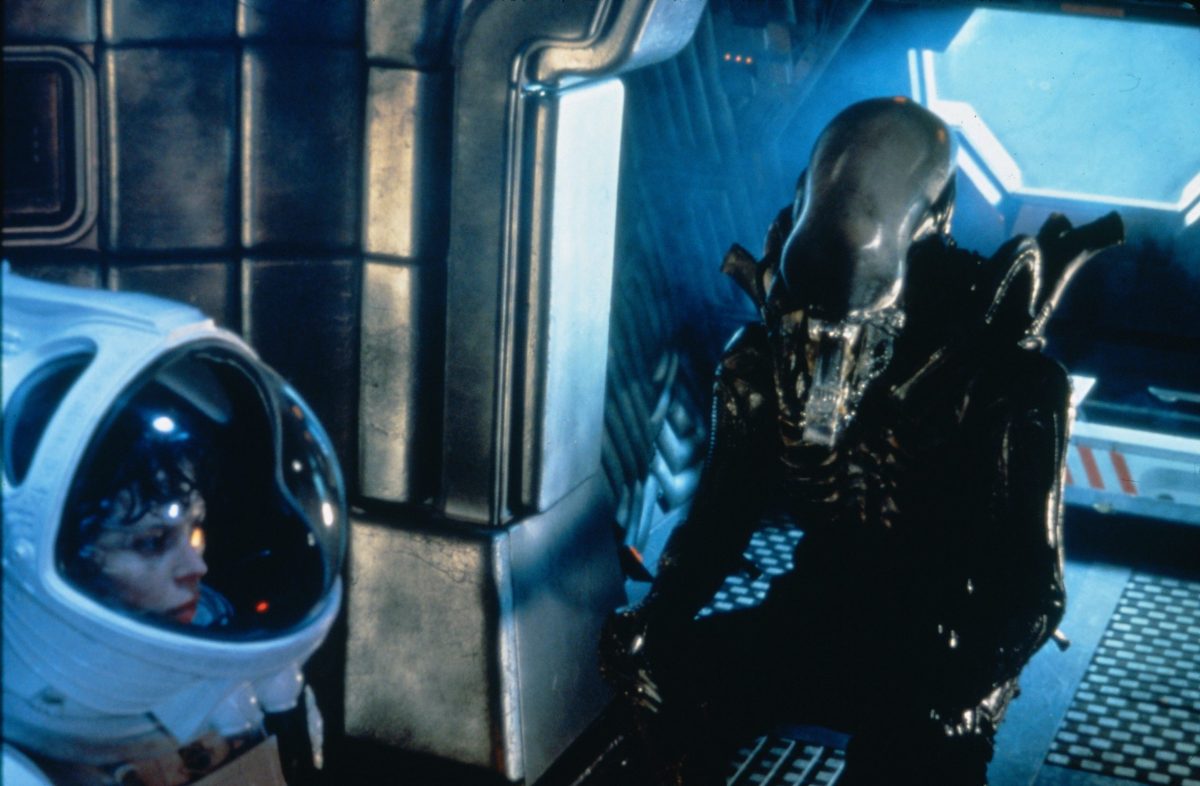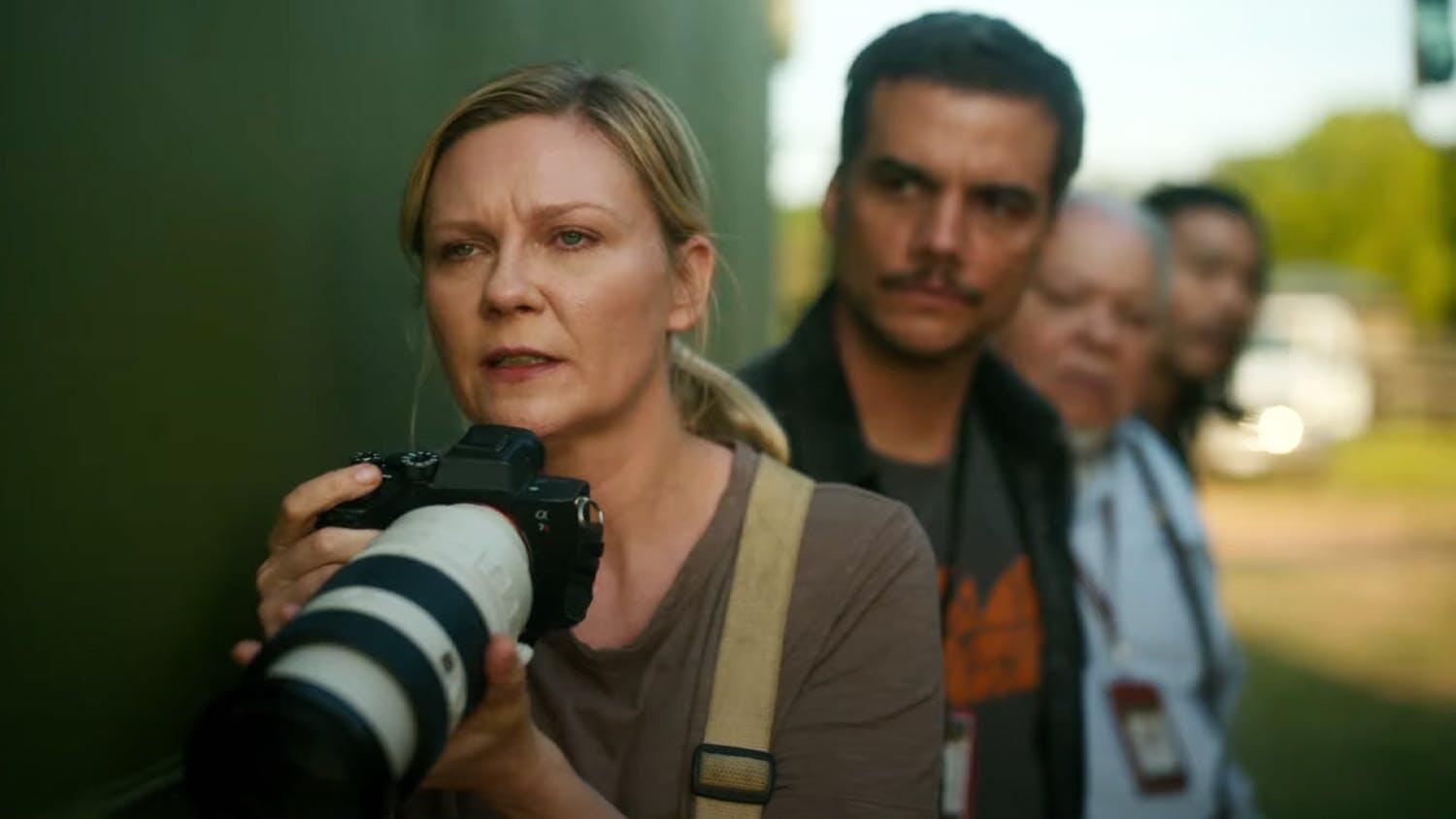A gigantic construction moves serenely through space where, though the night never ends, there’s always enough light to see strange objects. This one looks like the main set of D.W. Griffith’s Intolerance. It’s as if Babylon had been cut loose from earth to sail back through space to its own time. In actual fact, it’s the cargo-ship Nostromo on its return to earth at the end of an extended voyage to the far end of the galaxy.
When we go inside, the ship appears to have been as suddenly deserted as the Marie Celeste. We wander down empty corridors into abandoned living quarters, into engine rooms and, finally, into the command room where the computers are the only signs of life. The interior of the ship is vast. It contains the kind of waste space one seldom sees anymore except in some rare old Manhattan pile like the Dakota. Something decidedly eerie is going on.
Thus — familiarly but with immense promise — begins Alien, Ridley Scott‘s new, elaborately produced science-fiction film that opens today at the Criterion and other theaters. However, as this voyage continues, familiarity consumes the promise and leaves as residue the memory of some shrieks from shocks of a most mundane kind.
The crew of the Nostromo has not vanished. They are merely sleeping the time away and, shortly after the opening credits, they come forth from their sleep-pods to prepare for their re-entry into the earth’s orbit. It’s then that they encounter peculiar signals from the wreck of another space ship, one from another galaxy and one which has crashed onto an uncharted planetoid. The Nostromo stops to investigate, locates the craft and, when it takes off again for earth, it carries aboard a specimen of alien life, a small, octopus-like blob that won’t stop growing and — possibly worse — is “unclouded by conscience or delusions of morality.”
That’s about all one should or can say about the story originally conceived by Dan O’Bannon and turned into a screenplay by him and Ronald Shusett.
Alien is an extremely small, rather decent movie of its modest kind, set inside a large, extremely fancy physical production. Don’t race to it expecting the wit of Star Wars or the metaphysical pretentions of 2001 and Close Encounters of the Third Kind. At its best it recalls The Thing, though the Howard Hawks film was both more imaginatively and more economically dramatized.
It’s an old-fashioned scare movie about something that is not only implacably evil but prone to jumping out at you when (the movie hopes) you least expect it. There was once a time when this sort of thing was set in an old dark house, on a moor, in a thunderstorm. Being trendy, Mr. Scott and his associates have sent it up in space.
As he demonstrated with The Duellists, his first feature, Mr. Scott is a very stylish director. Though Alien is not the seminal science-fiction film one wants from him, it’s executed with a good deal of no-nonsense verve. The members of the small cast are uniformly good though, with two exception, the roles might have been written by a computer.
Sigourney Weaver is impressive and funny as the Nostromo‘s executive officer, the second in command, a young woman who manages to act tough, efficient and sexy all at the same time. Ian Holm is also excellent as the ship’s science officer, a man with a secret that will set him apart from everyone else forever.
Other members of the crew are played by Tom Skerritt, Harry Dean Stanton, Yaphet Kotto and Veronica Cartwright, the actress who was so good in Invasion of the Body Snatchers. She plays a somewhat similar role here, one that requires her to weep a lot and leaves her so red-eyed and red-nosed that she may be in danger of becoming the Isable Jewell of the living-color space-age.
Alien‘s sets and special effects are well done, but these things no longer surprise or tantalize us as they once did. In a very short time, science-fiction films have developed their own jargon that’s now become a part of the grammar of film. You know the sort of stuff I mean — the shots of blinking instrument panels, of wildly bleeping computers, of cryptic messages clattering in square type-faces across television screens. There’s also the obligatory shot of that huge space vehicle early on in every film. It appears from over our right shoulder, passes over our head and then proceeds slowly and majestically toward the far distance at screen-left. When I first saw it in 2001, it was awesome. Now it makes me feel like a turtle on a busy though unnaturally quiet highway.
Published: The New York Times, May 25, 1979





